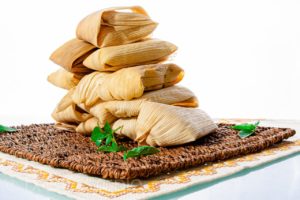Origin of the avocado
The avocado, known scientifically as Persea americana, is native to Central and South America. It is believed that the plant was first domesticated in southern Mexico or nearby regions of Central America thousands of years ago.
Archaeological remains indicate that the indigenous peoples of these areas cultivated and consumed avocados long before the arrival of Europeans.
The avocado has been a staple food in the diet of several ancient American cultures, such as the Aztecs and the Mayans.
Spanish conquistadors brought the avocado to Europe in the 16th century, and since then its consumption has spread to various parts of the world with or without climates suitable for its cultivation.
Today, Mexico is one of the world’s largest producers and exporters of avocados, and the fruit is grown in many other tropical and subtropical regions.
Avocados are prized for their unique flavour, creamy texture and nutritional benefits, which have made them a popular ingredient in international cuisine.
Types of avocado

There are numerous varieties of avocado, each with its own distinctive characteristics in terms of taste, texture and appearance. Some of the best known varieties are:
Hass avocado

The Hass avocado is one of the most popular and widely cultivated avocado varieties in the world. Here is more specific information about the Hass avocado:
- Origin: The Hass variety originated in the 1920s in an orchard in La Habra Heights, California, USA. It was cultivated by Rudolph Hass, a horticulturist, who discovered that this variety has superior characteristics to others.
- Characteristics of the fruit:
- Skin: The skin is rough and thick, dark green to black when ripe.
- Shape: It is usually oval or pear-shaped.
- Flesh: The flesh is creamy, smooth and pale green to yellow.
- Flavour: The Hass avocado is known for its rich, buttery flavour, which intensifies as it ripens.
- Seed: The seed is relatively small compared to other varieties.
- Ripening: Unlike some other varieties that ripen on the tree, the Hass avocado ripens after it is harvested. Its skin becomes darker as it ripens, and the texture of the flesh becomes smoother.
- Production and Marketing: The Hass avocado is the most widely grown and marketed type of avocado worldwide. Its popularity is due in part to its flavour, but also to its ability to withstand transport and to have a longer shelf life after harvest.
- Cultivation: Although the Hass avocado originated in California, today it is grown in various regions of the world with suitable climates, including Latin America, Africa, Australia, Spain, among other places.
- Nutrients: Like other avocados, the Hass avocado is rich in healthy fats, especially monounsaturated fatty acids. It also provides nutrients such as potassium, vitamin K, vitamin E and B-complex vitamins.
Fuerte avocado

The Fuerte avocado is another widely cultivated and consumed variety.
- Origin: The Fuerte avocado originated in Puebla, Mexico, in the early 20th century. It was the result of a natural cross between different varieties of Mexican avocados.
- Characteristics of the fruit:
- Skin: The skin of the Fuerte avocado is softer and thinner compared to the Hass. It is green in colour, but can have variable shades.
- Shape: It has a more elongated and stylised shape compared to the Hass.
- Flesh: The flesh is creamy, pale green in colour and has a milder flavour than the Hass avocado.
- Flavour: Although its flavour is less intense than the Hass, the Fuerte avocado is appreciated for its smooth texture and buttery flavour.
- Ripening: The Fuerte is known to ripen on the tree before harvest. This means that the flesh can have a firmer texture compared to Hass. However, it also ripens after harvesting.
- Production and Marketing: Although Hass is the most popular avocado variety worldwide, the Fuerte avocado is still cultivated and consumed in various regions, especially in Mexico and some other areas of Latin America.
- Cultivation: Like other avocado varieties, the Fuerte avocado is grown in regions with tropical and subtropical climates. Mexico is one of the main producers of this variety.
- Culinary uses: The Fuerte avocado is used in a wide variety of dishes, such as salads, sauces and guacamole. Its smooth texture makes it suitable for spreading on bread or as an accompaniment to various preparations.
Bacon avocado

The Bacon avocado is another interesting and tasty variety.
- Origin: The Bacon avocado originated in a plantation in Buena Vista County, Florida, USA. It was discovered by farmer James Bacon in the 1950s.
- Characteristics of the fruit:
- Skin: The skin of the Bacon avocado is softer and thinner than that of the Hass avocado, similar to that of the Fuerte avocado. The skin is dark green in colour.
- Shape: It has a rounder and wider shape compared to other avocado varieties.
- Flesh: The flesh is creamy, pale yellow in colour and has a mild, slightly smoky flavour.
- Flavour: It is characterised by its mild and slightly salty flavour, which makes it unique compared to other varieties.
- Ripening: Bacon avocado tends to ripen on the tree before harvest. The skin may become darker as it ripens, and the flesh becomes softer.
- Production and Marketing: Although not as common as the Hass avocado, the Bacon avocado is grown in California and other areas with suitable climates. Its popularity has been increasing, and it is available in many markets.
- Cultivation: Like other avocado varieties, the Bacon avocado is grown in regions with warm and subtropical climates.
- Culinary uses: Bacon avocado is versatile in the kitchen and is used in a wide variety of dishes, such as salads, sandwiches and guacamole. Its slightly smoky flavour makes it especially appealing to those looking for something different.
Zutano avocado

The Zutano avocado is another avocado variety that is grown, although it is less well known than others such as the Hass or Fuerte avocado.
- Origin: The Zutano avocado originates from Mexico and is one of the oldest avocado varieties.
- Characteristics of the fruit:
- Skin: The skin of the Zutano avocado is thin and light green in colour. Unlike some other varieties, the skin does not darken significantly when the avocado is ripe.
- Shape: It is usually elongated and conical in shape.
- Flesh: The flesh is light green in colour and has a firmer texture compared to varieties such as Hass.
- Taste: The taste of the Zutano avocado is less fatty and milder compared to the Hass. Some people describe it as more watery.
- Ripening: Zutano tends to ripen on the tree before harvest, and its skin does not change colour drastically when it is ready to be eaten.
- Production and Marketing: Although not as common as other varieties in international markets, the Zutano avocado is still grown and found in some regions with suitable climates.
- Cultivation: Like other avocado varieties, the Zutano is grown in tropical and subtropical regions, especially in Mexico and some areas of Latin America.
- Culinary uses: The Zutano avocado is used in many dishes, such as salads and sauces. Its firmer texture may be preferred in certain preparations.
Reed avocado

The Reed avocado is another avocado variety that has gained popularity for its unique characteristics.
- Origin: The Reed avocado originated in Carlsbad, California, United States. It was discovered in the 1940s by a grower named James Reed.
- Characteristics of the fruit:
- Skin: The skin of the Reed avocado is thick and rough, dark green in colour. As it matures, it may develop a purple hue.
- Shape: It has a round and large shape compared to some other varieties.
- Flesh: The flesh is creamy and light green in colour. What distinguishes the Reed avocado is its resistance to oxidation; it is less prone to turning brown after being cut.
- Flavour: The taste of the Reed avocado is described as rich and slightly sweet.
- Ripening: Reed tends to ripen on the tree before being harvested, similar to Fuerte. The skin becomes darker as it ripens.
- Production and Marketing: Reed avocado is grown in California and other regions with suitable climates. Although not as widely known as Hass, it has gained popularity in the market due to its flavour and resistance to oxidation.
- Cultivation: Like other avocado varieties, the Reed avocado is grown in tropical and subtropical areas.
- Culinary uses: Reed avocado is very versatile in cooking and is used in salads, sandwiches, guacamole and other dishes.
At Taquerias de Birra we are experts in tacos and Mexican food since 1989. If you want to try some quality traditional tacos or other typical recipes, we invite you to order takeaway or come and try them at C/ Don Pedro, 11 or at Plaza de las Comendadoras, 2.




